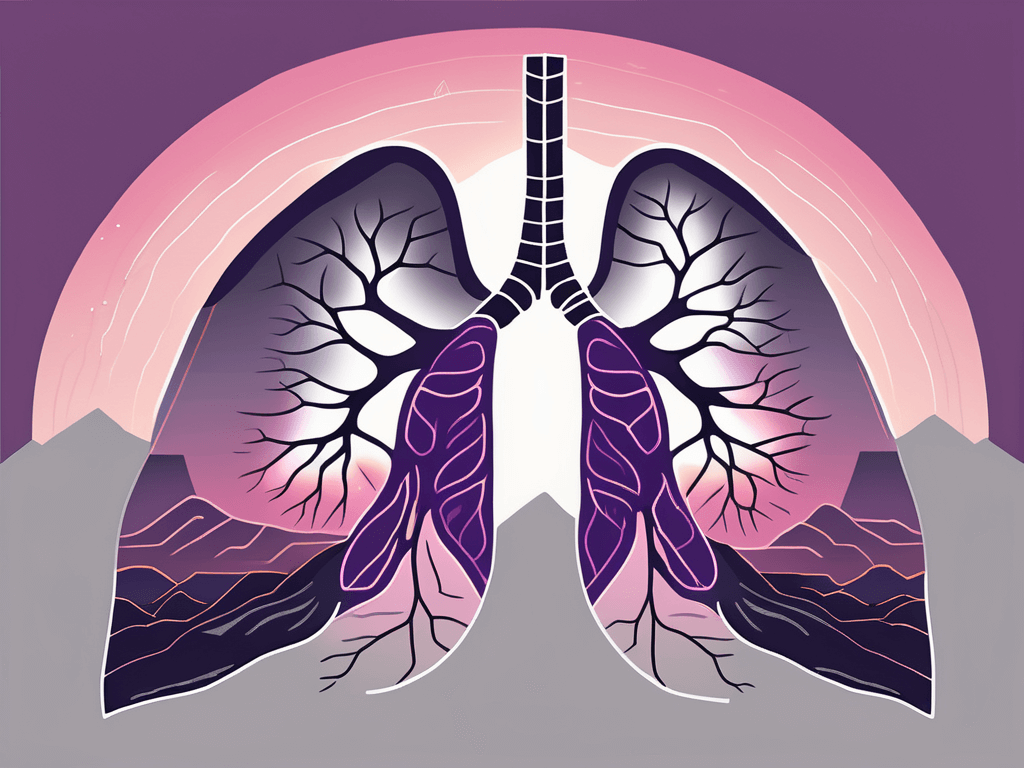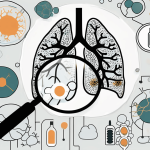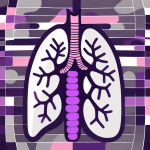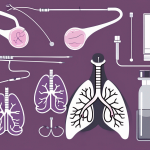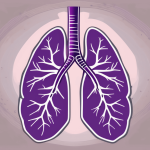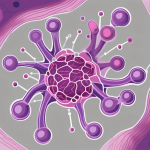Receiving a diagnosis of stage 3 lung cancer can be overwhelming, but understanding the implications, including survival rates, is crucial for navigating the treatment journey effectively. Stage 3 lung cancer indicates that the cancer has spread extensively, affecting nearby lymph nodes. Survival rates provide valuable insights into prognosis, but it’s essential to interpret them carefully, considering individual factors and advancements in treatment. Current statistics show a wide range of five-year survival rates, reflecting improvements in personalized treatment options. Treatment options for stage 3 lung cancer may include surgery, radiation therapy, chemotherapy, and immunotherapy, tailored to individual circumstances. Living with stage 3 lung cancer involves managing symptoms, seeking emotional support, and staying informed to navigate the journey with courage and resilience.
Receiving a diagnosis of stage 3 lung cancer is undoubtedly a difficult and overwhelming experience. It’s important to understand the implications of this diagnosis, including the stage 3 lung cancer survival rate, to effectively navigate your treatment journey. In this article, we will delve into the details of stage 3 lung cancer, explain the significance of survival rates, explore treatment options, and offer guidance on living with this condition. Remember, you are not alone in this fight, and there is hope and support available to you every step of the way.
Defining Stage 3 Lung Cancer
Before we dive into survival rates, it’s essential to have a clear understanding of stage 3 lung cancer itself. Lung cancer is typically categorized into four stages—stage 1, stage 2, stage 3, and stage 4. Stage 3 lung cancer can be further divided into three subcategories: stage 3A, stage 3B, and stage 3C. It is at this stage that the cancerous cells have spread extensively, affecting nearby lymph nodes and potentially other structures within the chest. It is crucial to note that while stage 3 lung cancer is considered advanced, it is not necessarily a terminal diagnosis.
The Stages of Lung Cancer
Understanding the different stages of lung cancer can help you comprehend the extent of the disease and the available treatment options. Stage 1 lung cancer is localized to the lungs, while stage 2 cancer has spread to the lymph nodes in the vicinity of the lungs. Stage 3 lung cancer progresses further, metastasizing to nearby lymph nodes, making treatment more complex. Finally, stage 4 lung cancer signifies that the cancer has spread beyond the lungs and lymph nodes to other organs in the body.
What Does Stage 3 Mean?
When you are diagnosed with stage 3 lung cancer, it means that the cancer has spread to lymph nodes located near the lung, heart, or trachea. At this stage, the disease is more extensive than previous stages but has not yet reached distant organs. While the diagnosis may be challenging to process, it’s essential to remember that advancements in medical research and treatment options have significantly improved the outcomes for individuals with stage 3 lung cancer.
The Importance of Survival Rates in Cancer Prognosis
Survival rates provide valuable insights into cancer prognosis and treatment outcomes. These rates are calculated by assessing a large number of individuals diagnosed with stage 3 lung cancer and determining the percentage of patients who survive for a specific period after their diagnosis. Survival rates are typically given in terms of five-year survival rates, indicating the proportion of individuals who are alive five years after their diagnosis.
Interpreting Survival Rates
While survival rates offer valuable information, it’s crucial to interpret them carefully. These rates are based on data from previous years and may not reflect the most recent advancements in treatment. Additionally, survival rates are general indicators and may not consider specific factors unique to your situation, such as your overall health, response to treatment, or access to newer therapies. Always consult with your healthcare team to understand how survival rates may apply to your individual case.
Factors Influencing Survival Rates
Several factors can affect survival rates for stage 3 lung cancer, including the subtype of lung cancer, the extent of spread, your overall health, age, and response to treatment. It is important to note that statistics are merely averages and don’t provide an accurate prediction for individual cases. Always work closely with your healthcare team to determine your treatment options and potential outcomes based on your specific circumstances.
Understanding the Stage 3 Lung Cancer Survival Rate
While it’s only natural to be concerned about the survival rate associated with stage 3 lung cancer, it’s important to remember that these rates continue to improve over time. With advancements in diagnostic techniques, treatment approaches, and supportive care, the outlook for individuals with stage 3 lung cancer has significantly improved.
Current Statistics for Stage 3 Lung Cancer Survival
According to current statistics, the overall five-year survival rate for stage 3 lung cancer ranges from 5% to 40%. However, these rates are generalized figures and do not account for advancements in personalized treatment options or individual responses to specific therapies. It’s important to consult with your healthcare team to gain a better understanding of how these statistics may apply to your case, as they can provide insights and guidance specific to your circumstances.
How Survival Rates Have Improved Over Time
It is encouraging to note that survival rates for stage 3 lung cancer have improved over the years. This can be attributed to early detection methods, advancements in surgical techniques, targeted therapies, radiation therapy advancements, and immunotherapy options. As new treatment options become available and research continues to progress, the survival rates for stage 3 lung cancer are expected to continue to rise. Stay positive and explore the various treatment options that may be beneficial for you.
Treatment Options for Stage 3 Lung Cancer
The treatment approach for stage 3 lung cancer will depend on several factors, including the specific subtype of lung cancer, the extent of spread, your overall health, and personal preferences. Your healthcare team will work closely with you to determine the most appropriate treatment plan. Some common treatment options for stage 3 lung cancer include:
Surgical Interventions
In some cases, surgical interventions may be recommended to remove the cancerous tumor and affected lymph nodes. Surgical options may include lobectomy, which involves removing a lobe of the lung, or pneumonectomy, which involves removing an entire lung. Your healthcare team will assess your condition and determine if surgery is a viable option for you.
Radiation Therapy
Radiation therapy utilizes high-energy X-rays or other particles to destroy cancer cells. It may be recommended as the primary treatment method or in combination with other approaches such as surgery or chemotherapy. Radiation therapy can be delivered externally or internally (brachytherapy). Your healthcare team will determine the most suitable radiation therapy plan for you.
Chemotherapy and Immunotherapy
Chemotherapy involves the use of medications to kill cancer cells throughout the body. Immunotherapy, on the other hand, works by utilizing your body’s immune system to identify and destroy cancer cells. These treatment options can be used alone or in combination with other therapies. Your healthcare team will guide you through the potential benefits and side effects of these treatments and develop a personalized plan for you.
Living with Stage 3 Lung Cancer
A diagnosis of stage 3 lung cancer can understandably bring about a range of emotions, challenges, and uncertainties. However, it’s important to remember that you are not alone in your journey, and there is a multitude of resources and support available to help you navigate through this challenging time.
Managing Symptoms and Side Effects
Lung cancer and its treatments may cause a variety of physical symptoms and side effects. These may include shortness of breath, fatigue, pain, appetite changes, and emotional distress. It is crucial to communicate openly with your healthcare team about any symptoms or side effects you experience, as they can provide medications, therapies, or lifestyle tips to manage these challenges effectively.
Emotional and Psychological Support
Living with stage 3 lung cancer can significantly impact your emotional and psychological well-being. It is essential to seek support from loved ones, join support groups, or consider individual counseling to address these aspects of your journey. Remember that emotional support is just as important as physical care; connecting with others who understand your experiences can provide comfort, guidance, and inspiration.
In conclusion, understanding the stage 3 lung cancer survival rate is a crucial aspect of comprehending your diagnosis and treatment options. While the statistics may initially appear daunting, it is essential to maintain hope and remember that personalized treatment strategies, advancements in medical research, and the unwavering support of your healthcare team can significantly improve outcomes. Remember, you are not alone in this fight, and by staying informed, seeking appropriate treatment, and embracing the support available, you can navigate your journey with stage 3 lung cancer with courage and resilience.

